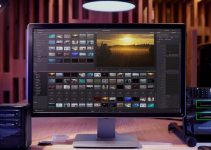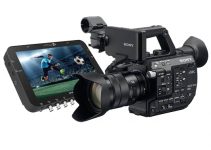For editors, there is probably no worse moment than when you tap the spacebar to playback your work and the video begins stuttering.
Now to figure out what features or settings you can change to make the NLE at least usable for the next few moments.
After these moments, you might find yourself considering building or upgrading your PC to ensure better performance in Adobe Premiere Pro or After Effects.
Unless you have been talking computers and components consistently for the past decade building a PC can be daunting. Luckily, it doesn’t have to be. Sparksight has come to the rescue with an in depth, multi-part series on how to build the perfect PC for video editing.
Noah Killeen is the star of this video and spends his time going over what components are most important and why. He also shows off what parts they opted to use for the build. Here’s the full list:
- Intel Core i9-9900K 3.6GHz 8-Core Processor (B&H, Amazon)
- MSI GeForce RTX 2070 Graphics Card (B&H, Amazon)
- Corsair Vengeance LPX 64GB (4 x 16GB) DDR4 Memory (Amazon)
- Samsung 860 EVO 500GB SSD (B&H, Amazon)
- Samsung 970 EVO 500GB M.2 NVMe SSD (B&H, Amazon)
- Seagate 2TB BarraCuda HDD (B&H, Amazon)
- Noctua NH-D15S Dual-Tower CPU Cooler (Amazon)
- Gigabyte Z390 DESIGNARE Motherboard (B&H, Amazon)
- Corsair RM850x 850W Power Supply (Amazon)
- Fractal Design Define R6 USB-C Mid-Tower Case (Amazon)
Though Killeen does emphasize that there is no exact “best” component for everything and things are constantly changing, meaning you will need to take some care to research your build before you get started. One place he recommends is Puget Systems due to their online guides and benchmarks.
So, where do you start? In the most sensible spot: the CPU. The central processing unit is important for so many reasons when it comes to general computing as well as video edit. They opted for the Intel Core i9-9900K with its 8 cores and 3.6GHz clock speed.
Killeen points out a common misconception that more cores is always better. For some applications it may be beneficial, but for Premiere and After Effects where they have moved away from multi-threading in recent versions you can get great performance with faster clock speeds and fewer cores. This is even backed up by various benchmark tests.
Number two on the order of importance is the graphics card, or GPU. Considering video and motion graphics are core aspects of editing, this is a sensible place to invest on your build. Graphics cards work in almost the opposite way of the CPU.
Instead of fewer, faster processing units that can handle complex tasks, GPUs use many more compute units to handle simpler tasks. Faster graphics cards will make certain settings, such as filters and video effects, run much more smoothly.
The third serious component for video editing systems is the RAM, or memory. I like to think of memory as the place where the computer keeps all the stuff you are using right now at the ready. Your applications, recently opened videos, web pages, etc.
All the stuff you might need quickly, which explains how it helps to have a lot. After Effects in particular needs a lot of RAM Editing is constantly requiring you to load large videos or tons of graphics at a time. More memory equals better performance.
Storage is a critical part as well, and not just because you will need a lot of it to work with massive video files. Hard drives, the spinning disk versions known as HDDs, are the classic drive. They can get real big for cheap. However, if you want a performance boost you will want to go to solid state drives, or SSDs.
SSDs don’t use moving parts and can read and write data so much faster than traditional drives. A newer type called NVMe is referenced because they will get you even faster speeds because the M.2 port is a more direct connection on the motherboard itself. However, it will be more expensive.
The final recommendation is to use an SSD for your operating system and applications and then a second drive, either an SSD or HDD, that holds your files. Having files on separate drives allows for faster performance since it isn’t trying to read from multiple parts of the same drive at once.
Interested in building your own PC now? You should absolutely check out Part 2, where they unbox all the components and go more in depth on each part, and Part 3, where they actually show you how to put everything together.
[source: Sparksight]
Disclaimer: As an Amazon Associate partner and participant in B&H and Adorama Affiliate programmes, we earn a small comission from each purchase made through the affiliate links listed above at no additional cost to you.



